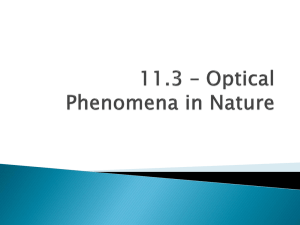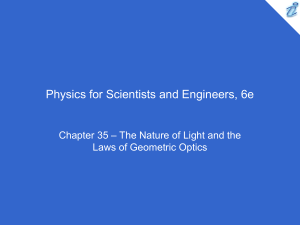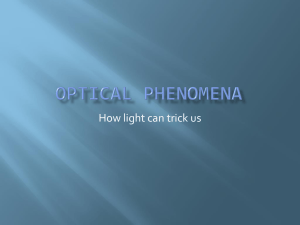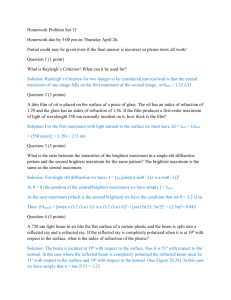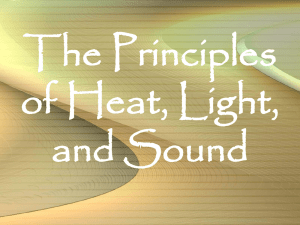Light Reflection and Refraction Pre
advertisement
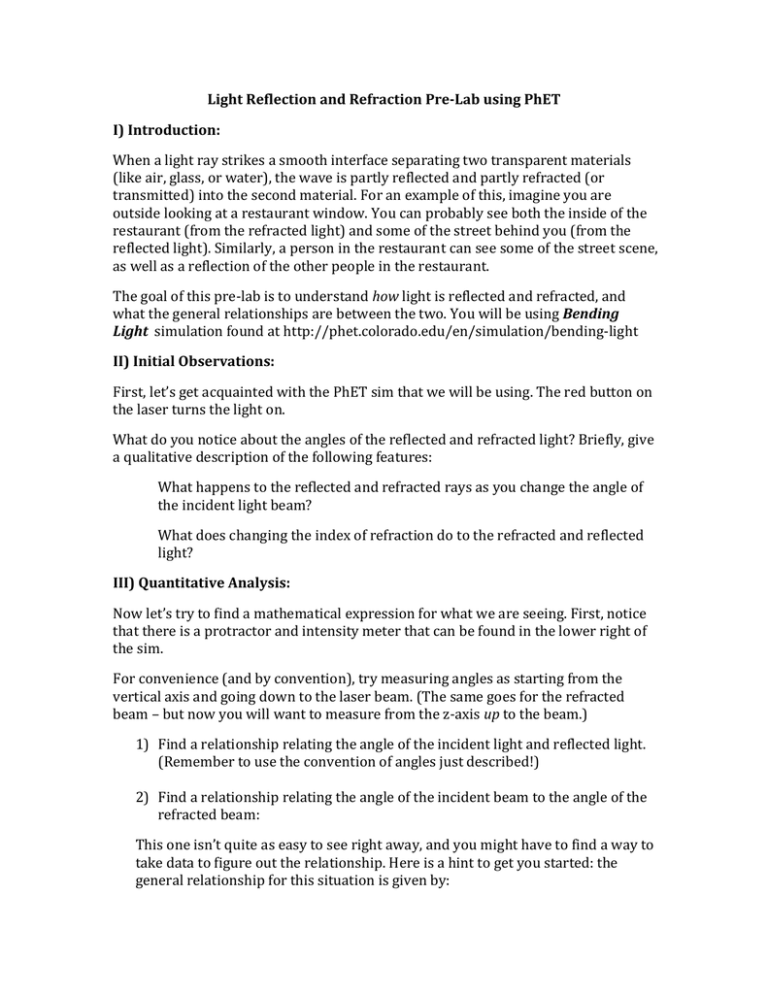
Light Reflection and Refraction Pre-Lab using PhET I) Introduction: When a light ray strikes a smooth interface separating two transparent materials (like air, glass, or water), the wave is partly reflected and partly refracted (or transmitted) into the second material. For an example of this, imagine you are outside looking at a restaurant window. You can probably see both the inside of the restaurant (from the refracted light) and some of the street behind you (from the reflected light). Similarly, a person in the restaurant can see some of the street scene, as well as a reflection of the other people in the restaurant. The goal of this pre-lab is to understand how light is reflected and refracted, and what the general relationships are between the two. You will be using Bending Light simulation found at http://phet.colorado.edu/en/simulation/bending-light II) Initial Observations: First, let’s get acquainted with the PhET sim that we will be using. The red button on the laser turns the light on. What do you notice about the angles of the reflected and refracted light? Briefly, give a qualitative description of the following features: What happens to the reflected and refracted rays as you change the angle of the incident light beam? What does changing the index of refraction do to the refracted and reflected light? III) Quantitative Analysis: Now let’s try to find a mathematical expression for what we are seeing. First, notice that there is a protractor and intensity meter that can be found in the lower right of the sim. For convenience (and by convention), try measuring angles as starting from the vertical axis and going down to the laser beam. (The same goes for the refracted beam – but now you will want to measure from the z-axis up to the beam.) 1) Find a relationship relating the angle of the incident light and reflected light. (Remember to use the convention of angles just described!) 2) Find a relationship relating the angle of the incident beam to the angle of the refracted beam: This one isn’t quite as easy to see right away, and you might have to find a way to take data to figure out the relationship. Here is a hint to get you started: the general relationship for this situation is given by: Here and are angles corresponding to either the medium on top or bottom, and n and m are the indices of reflection of either the top or bottom material. Your job is to come up with a way of figuring out which variable corresponds to which material. The recorder’s job will be especially important here. Rather than just writing down your results, you MUST write down a description (2-3 paragraphs) of the process you went through in trying to figure this out. In addition, write down any data you collect, and give a description of why it is consistent with your conclusion. IV) Trying another approach: You should have just come up with one method for finding out which media the variables above correspond to. Now come up with a different approach. (There are at least two approaches to solving this problem, and your job is to figure out what the other is.) You don’t actually have to collect all of the data again, but do give a description (2-3 paragraphs) of what how you would go about figuring this out. V) Prism Break (EXTRA CREDIT) Now switch to the tab on the top of the PhET sim titled “Prism Break.” For this: Try playing around with the various sorts of prisms and answer the following (a couple of sentences per answer is sufficient): 1) Are the reflection and refraction of light color-dependent? How can you tell? 2) Which shapes split the white light into different colors the best? Is there a particular set-up that you found demonstrates this well? 3) Given that white light can be split, try to make a situation where light forms a rainbow. What shape did you use to do this? Can you make a double rainbow in any way?

